12 Worst Weeds in Austin, TX
BY NICKI DESTASI | JULY 18TH, 2019 | AUSTIN, LAWN CARE, TEXASIt’s staggering how quickly Austin has grown thanks to its fabulous music, delicious food trucks, and booming tech industry. Unfortunately, the weeds grow just as fast as the population. No matter how hard you work to keep weeds at bay, they find a way to wreak havoc on your lawn. Here, we’ll help you identify, prevent, and remove the 12 worst weeds in your Austin lawn.
In this article, we’ll discover:
- Why Are Weeds Bad for Your Austin Lawn?
- Ways to Control Weeds on Your Austin Lawn
- 12 Worst Weeds in Austin, TX
- Annual Sow Thistle
- Chickweed
- Dallisgrass
- Dandelion
- Goosegrass
- Henbit
- Nutsedge
- Purslane
- Quackgrass
- Rescuegrass
- Smooth Crabgrass
- Spotted Spurge
Why Are Weeds Bad for Your Austin Lawn?
Like any villain, weeds exploit weaknesses. If your lawn has a problem, they’ll find it and take advantage of it. Weeds are typically a symptom of an underlying issue, like thinning turf, soil compaction, or improper pH levels. Routine maintenance, like mowing, fertilizing, and watering, will keep your lawn healthy and prevent weeds from taking root.
There are many reasons weeds are bad for your Austin lawn, including:
- Weeds steal nutrients, water, and sunlight from your turfgrass and plants
- They crowd healthy plants and grass
- They camouflage and spread pests and diseases
Ways to Control Weeds on Your Austin Lawn
There are two effective weed control methods: hand pulling and chemical treatments. Hand pulling is the safest removal method, but it isn’t always the best. Before selecting your removal method, identify the weeds you are dealing with to ensure the most effective removal.
Hand Weeding
Experts agree hand weeding is just as necessary as chemical removal methods. Aim to weed your yard and garden weekly or bi-weekly. Here are some tips to keep in mind:
- Remove weeds while they are young before they have bloomed or developed complex root systems
- Remove the entire weed, including roots, rhizomes, tubers, or bulbs, or new weeds will grow in their place
- Use a screwdriver or weed fork to remove weeds with a taproot
Chemical Treatments
- Pre-emergent herbicide: Kills seeds before germination, preventing weeds from popping up in your yard
- Post-emergent herbicide: Targets weeds you can see, disrupting growth and killing them
- Iron-based herbicide: Specifically targets broadleaf weeds
12 Worst Weeds for Austin, TX
Whether your yard is weed-free or overrun with problems, you’ll want to watch for several types of weeds. Some are stealthy, and some are bold, but these are the 12 worst weeds in your Austin lawn.
1. Annual Sow Thistle (Sonchus oleraceus)
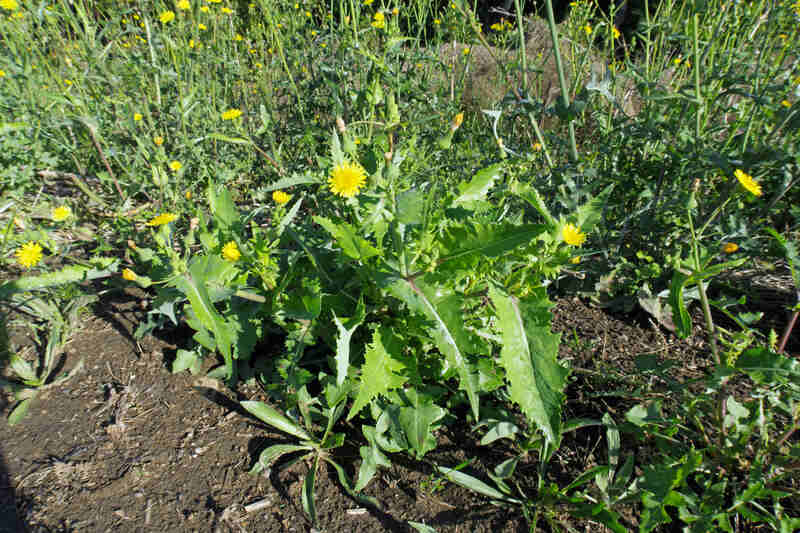
Photo Credit: Harry Rose / Flickr / CC BY 2.0
Annual sow thistle grows in almost every state, anywhere, including roadsides, lawns, and meadows. The plant can reach up to 4 feet tall and blooms in late spring and fall. Annual sow thistle harbors pests and looks like a cousin of dandelions.
Annual sow thistle is aggressive and has a shallow taproot that allows for easy hand removal. Several pre and post-emergent herbicides are also effective. Specimens have hairless, blue-green, lobed leaves attached to thick, hollow stems that produce milky sap. The flowers are bright yellow and urn-shaped, maturing into a puffy seed head similar to a dandelion.
Life Cycle: Annual
Type: Broadleaf
USDA Zone: 6-9
Growing Season: Winter; summer
Growing Conditions: Adaptable; full sun to partial shade; moist, well-drained, sand, loam, clay, or chalk
Danger: Non-toxic; edible
Removal Methods: Hand pulling, pre-emergent herbicide, post-emergent herbicide
2. Chickweed (Stellaria media)
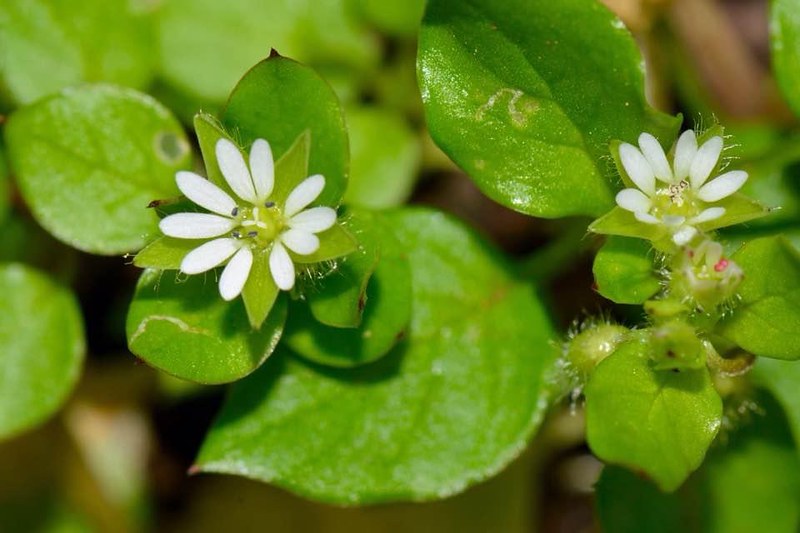
Photo Credit: Jean and Fred Hort / Flickr / CC BY 2.0
Chickweed seeds remain viable for 10 years, and each plant has around 25,000 seeds, making it incredibly difficult to eradicate. This upright plant creates a thick mat of small, smooth, oval-shaped leaves and clusters of tiny white flowers.
Chickweed sprouts in late summer and fall and grows through winter. It thrives in nitrogen-rich soils and in shady areas under trees, close to homes, or along garden walls. Thankfully, these weeds respond well to hand pulling, and if you’re hungry, you can eat them in a salad or pesto. Just be sure to wash it first.
Life Cycle: Annual
Type: Broadleaf
USDA Zone: 4-11
Growing Season: Winter
Growing Conditions: Adaptable; shaded, moist areas
Danger: Non-toxic; edible
Removal Methods: Hand pulling, broadleaf herbicide
3. Dallisgrass (Paspalum dilatatum)
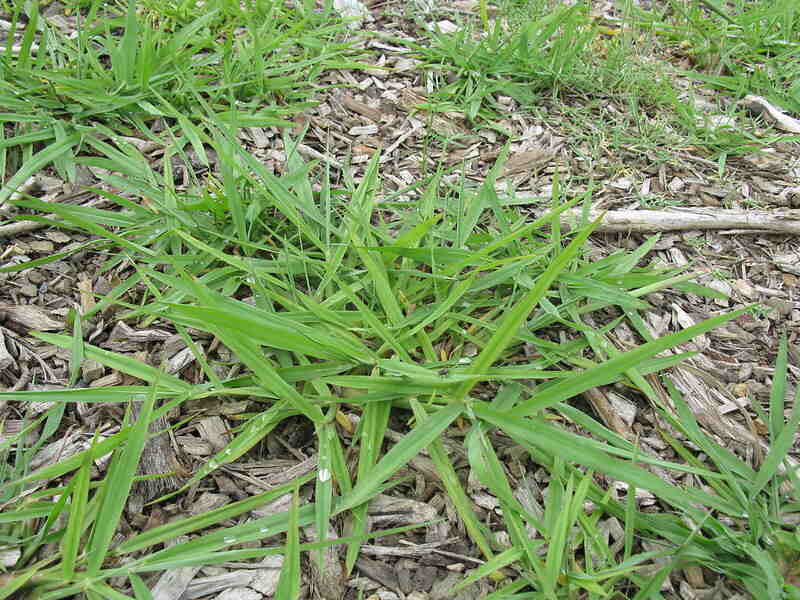
Photo Credit: Harry Rose / Flickr / CC BY 2.0
Dallisgrass started off as a forage plant for livestock in the 1800s. Homeowners often confuse dallisgrass with crabgrass. This invasive nuisance forms clumps using deep rhizomes. Specimens are low-growing and coarsely textured with light green leaves and long seed heads atop tall stalks.
Dallisgrass grows faster than turfgrass, and the longer it grows, the harder it is to control. It is one of the more common and problematic weeds in the Southern and Southeastern United States.
Life Cycle: Perennial
Type: Grass
USDA Zone: 6-9
Growing Season: Warm-season
Growing Conditions: Adaptable; moist sand or clay
Danger: Non-toxic
Removal Methods: Weed fork, pre-emergent herbicide.
4. Dandelion (Taraxacum officinale)
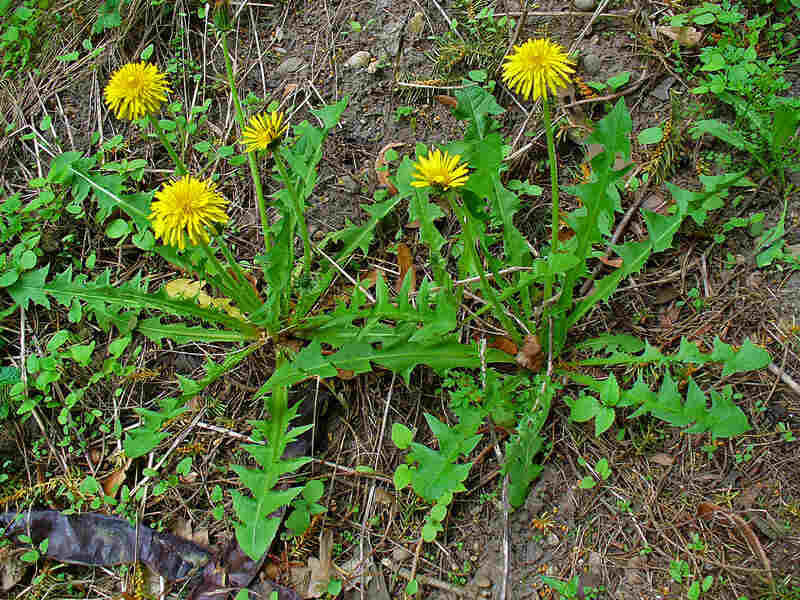
Photo Credit: H. Zell / Wikimedia Common / CC BY-SA 3.0
Dandelion is one of the most recognizable weeds in the world. The long, deeply lobed leaves form a rosette. Its rounded yellow flowers turn into fluffy puff balls that carry seeds on the wind, infesting your lawn.
Hand pulling or dandelion forks work well for removal. After you rip them from your lawn, you can clean them off and eat them in everything from cookies to ice cream. Dandelion tea is also popular. Medicinally, they help with several ailments, including:
- Skin problems
- Constipation
- Fluid retention
- Urinary problems
- Liver issues
- Arthritis
- Muscle tension
Life Cycle: Perennial
Type: Broadleaf
USDA Zone: 3-10
Growing Season: Cool-season
Growing Conditions: Adaptable; full sun
Danger: Non-toxic; edible
Removal Methods: Hand pulling, dandelion ford, post-emergent broadleaf herbicide
5. Goosegrass (Eleusine indica)
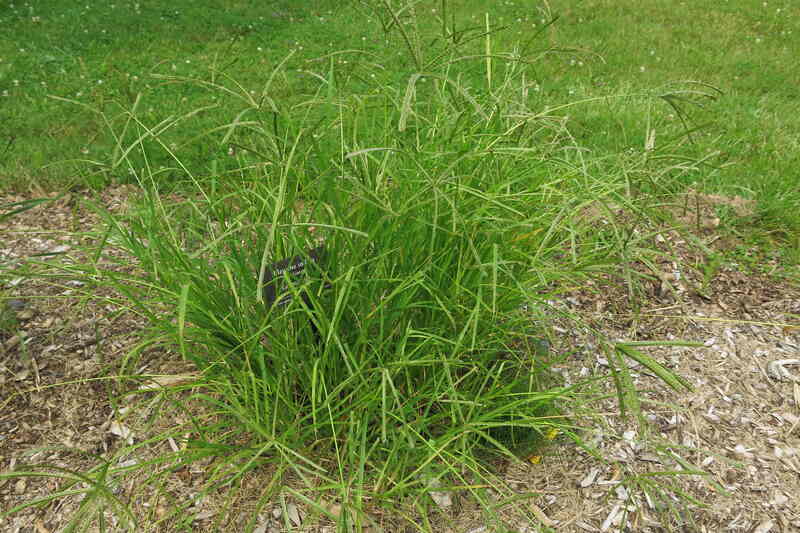
Photo Credit: NY State IPM Program at Cornell University / Flickr / CC BY 2.0
Homeowners often confuse goosegrass, also known as wiregrass, with smooth crabgrass. Specimens have leaf sheaths that end in long, thin, green, slightly hairy leaves. The seed heads comprise one to six-inch long spikes growing in a row to resemble a zipper.
Goosegrass has fibrous roots and prefers compacted soil. One plant produces up to 50,000 seeds and is difficult to eliminate. They are resistant to many pre and post-emergent herbicides. Good aeration and lawn maintenance practices are the best control methods.
Life Cycle: Annual
Type: Grass
USDA Zone: 3-9
Growing Season: Warm-season
Growing Conditions: Adaptable; prefer compacted soil
Danger: Non-toxic; used medicinally
Removal Methods: Hand pulling, pre-emergent herbicide, non-selective post-emergent herbicide
6. Henbit (Lamium amplexicaule)
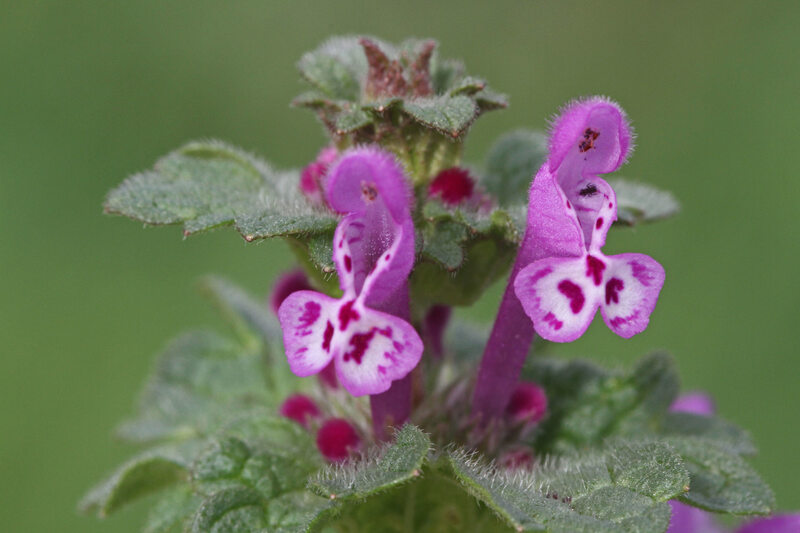
Photo Credit: Miltos Gikas / Flickr / CC BY 2.0
Henbit creeps into lawns in the early spring and grows until summer when it goes dormant. You can identify specimens from their pale purple and red blooms that grow in dense whorls. Leaves are egg-shaped, blunt, and coarsely toothed.
Henbit is a member of the mint family and is popular with bees and hummingbirds. The leaves, flowers, and square stems are edible with a slightly sweet and peppery flavor, sometimes compared to celery.
Henbit has shallow, fibrous roots and grows upright. Choose a dense, warm-season grass and maintain it regularly. It’s important to avoid overwatering, which encourages henbit growth and seed germination.
Life Cycle: Annual
Type: Broadleaf
USDA Zone: 3-8
Growing Season: Cool-season
Growing Conditions: Adaptable
Danger: Non-toxic; edible
Removal Methods: Hand pulling, pre-emergent herbicide, post-emergent herbicide
7. Nutsedge (Cyperus rotundus)
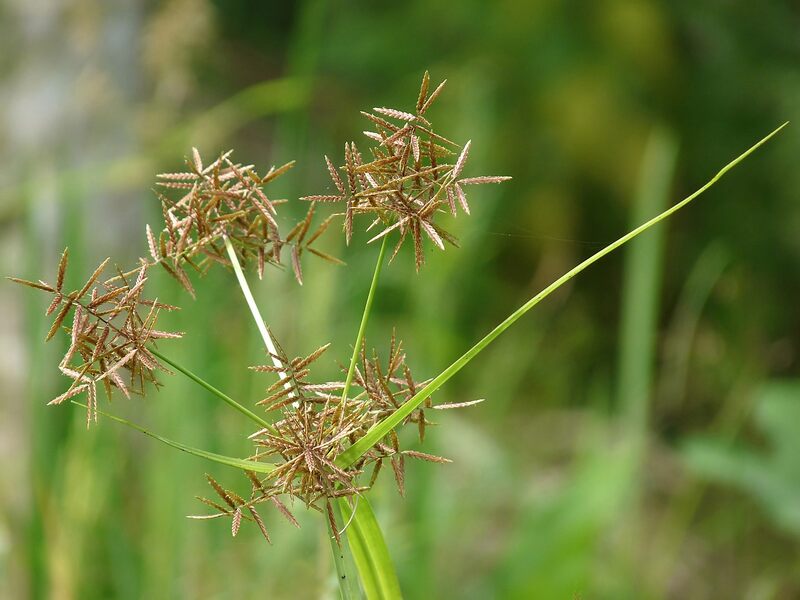
Photo Credit: Jeevan Jose, Kerala, India / Wikimedia Commons / CC BY-SA 4.0
Often labeled as the world’s worst weed, nutsedge is also called nutgrass and comes in yellow and purple varieties. Nutsedge resembles grass but grows twice as fast. You’ll notice the long, thin, light green (yellow) or dark green (purple) leaves grow taller than the rest of your lawn shortly after a mow. Aeration and proper watering techniques help control nutsedge.
Like goosegrass, nutsedge has spiked seed heads. It grows via tubers and rhizomes, six to 12 inches deep. Hand-pulling nutsedge often leaves the tubers, creating a new plant in its place. Apply several applications of chemical herbicide to fend off nutsedge.
Life Cycle: Perennial
Type: Sedge
USDA Zone: 3-10
Growing Season: Warm-season
Growing Conditions: Adaptable; full sun and wet soil
Danger: Non-toxic; edible with medicinal uses.
Removal Methods: Hand pulling, weed fork, post-emergent herbicide
8. Purslane (Portulaca oleracea)

Photo Credit: Júlio Reis / Wikimedia Commons / CC BY-SA 2.5
Purslane, or hogweed, is a prostrate-growing plant with shiny, oblong leaves. It is fast-growing with purple-red stems and produces small, five-petaled, yellow flowers. Tiny black seeds form inside egg-shaped pods and are viable for up to 40 years. Purslane responds well to hand removal.
Life Cycle: Annual
Type: Broadleaf
USDA Zone: 3-12
Growing Season: Warm-season
Growing Conditions: Adaptable; full sun; prefers well-drained, moist sand or loam
Danger: Non-toxic; edible
Removal Methods: Hand pulling
9. Quackgrass (Elytrigia repens)
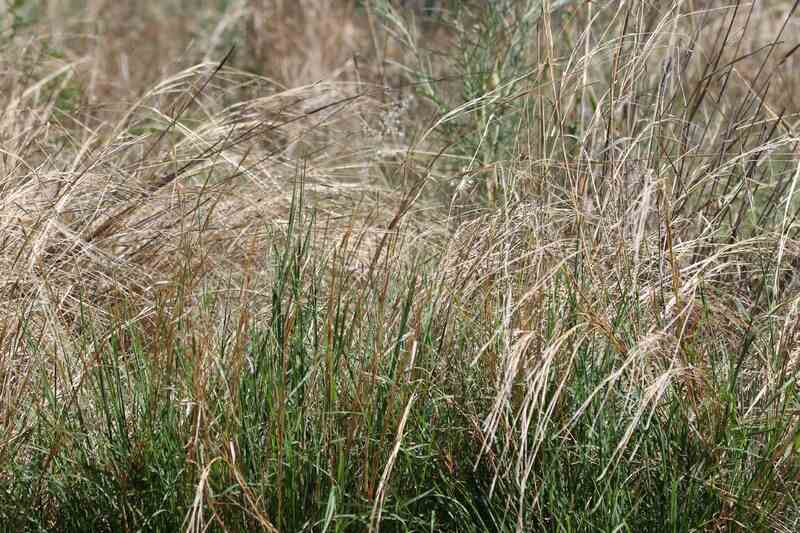
Photo Credit: Pxhere
Quackgrass is quick-growing and resembles crabgrass. It establishes via rhizomes. Instead of spikes, the seed heads resemble wheat. Also known as common couch, quackgrass has blue-green leaves and a distinctive auricle, a small appendage that clasps around the stem.
Life Cycle: Perennial
Type: Grass
USDA Zone: 3-9
Growing Season: Cool-season
Growing Conditions: Adaptable; sand, loam, or clay
Danger: Non-toxic; edible with medicinal uses
Removal Methods: Hand pulling, post-emergent herbicide
10. Rescuegrass (Bromus catharticus)
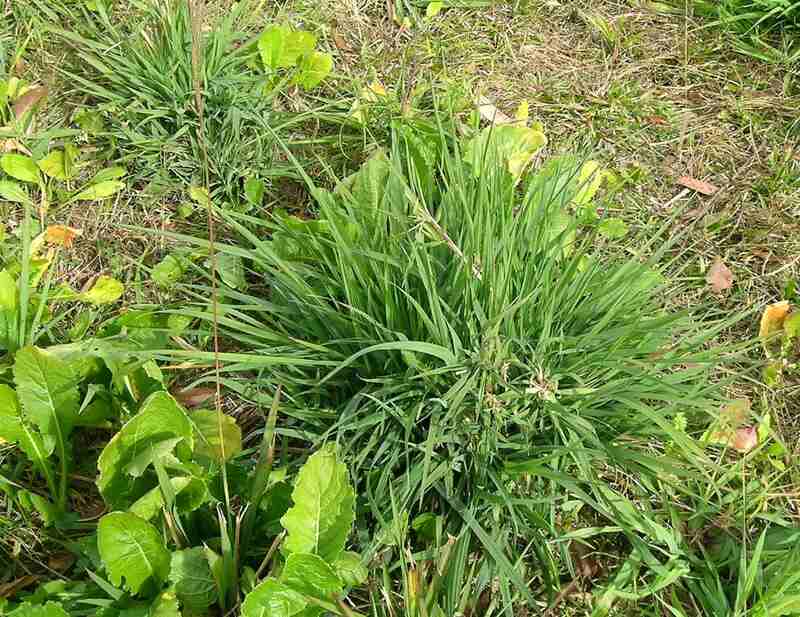
Photo Credit: Harry Rose / Flickr / CC BY 2.0
Rescuegrass, or prairie grass, grows in late spring, summer, and fall in dense concentrations of sword-like, green leaves. Specimens crowd native plants, starving them of beneficial nutrients. The hairy leaf sheaths are a lighter green than the rest of the leaf, and the yellow seed heads have wheat-like, flattened spikelets. Remove rescuegrass by hand, but wear gloves because it is toxic to some people.
Life Cycle: Annual
Type: Grass
USDA Zone: 6-10
Growing Season: Cool-season
Growing Conditions: Sand or loam
Danger: Non-toxic; skin irritant
Removal Methods: Hand removal, post-emergent herbicide
11. Smooth Crabgrass (Digitaria ischaemum)
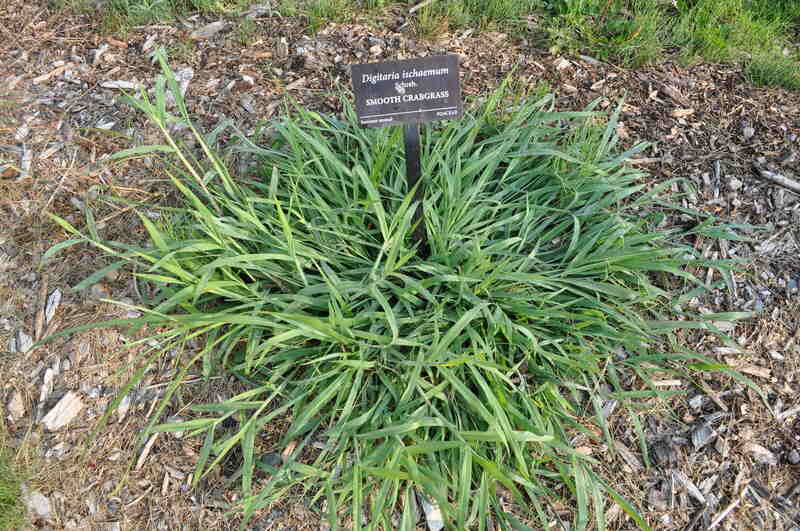
Photo Credit: NY State IPM Program at Cornell University / Flickr / CC BY 2.0
There are around 35 types of crabgrass, but the one that affects Austin homeowners the most is smooth crabgrass. It is low-growing and has dull green leaves. Its stems turn reddish-purple with age. Smooth crabgrass tolerates mowing and still produces seed at ½ inch in height.
Life Cycle: Annual
Type: Grass
USDA Zone: All
Growing Season: Warm-season
Growing Conditions: Adaptable
Danger: Non-toxic
Removal Methods: Weed fork, pre-emergent herbicide, post-emergent herbicide
12. Spotted Spurge (Chamaesyce maculata)
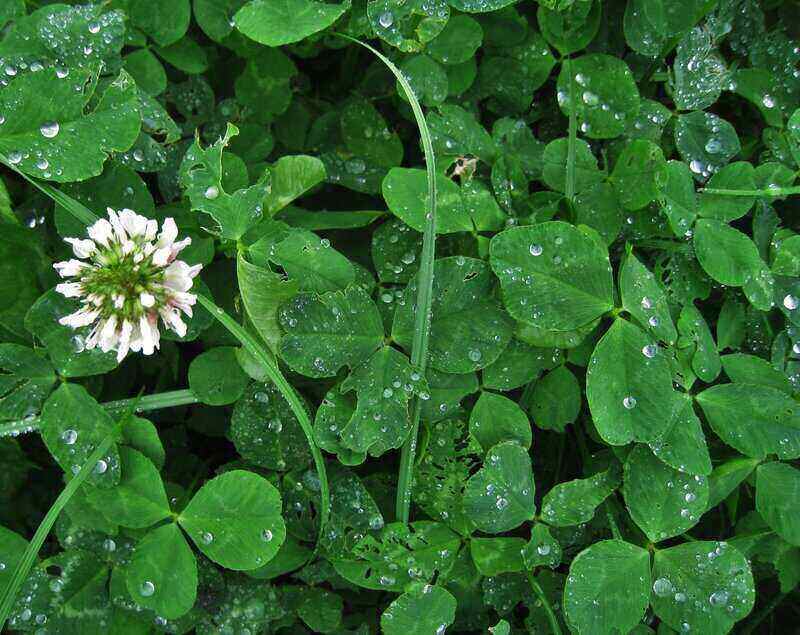
Photo Credit: PxFuel
Find spotted spurge on roadsides, sidewalk cracks, gardens, and lawns in late May through summer. Control its growth with mulch or hand-pull pesky specimens. Spotted spurge is a prostrate-growing groundcover with small, dark green, oval leaves with a dark red to purple spot in the middle.
The stems are pink to dark red and excrete a milky sap when broken or cut. Spotted spurge blooms tiny white or pink flowers, forming inconspicuous clusters. The leaves, stems, flowers, and fruits are all slightly hairy.
Life Cycle: Annual
Type: Broadleaf
USDA Zone: 3-9
Growing Season: Warm-season
Growing Conditions: Adaptable; full sun
Danger: Moderate; skin irritant; toxic to sheep
Removal Methods: Hand pulling, pre-emergent herbicide, post-emergent herbicide
FAQ About the Worst Weeds in Austin
Stop weeds from taking root with these helpful tips:
● Choose the right grass type: certain grass types, like bermudagrass, are aggressive and naturally crowd out weeds.
● Keep a healthy lawn: mow, water, and fertilize according to your grass cultivar; a healthy lawn is more prepared to fend off invasive weeds.
● Apply pre-emergent herbicide: these chemicals prevent weeds from germinating
● Mulch: prevents weeds and aids in soil moisture retention
● Pull by hand: remove weeds as soon as possible
Follower these universal steps to maximize your lawn’s health:
● Mow at the right time: Mid-morning, about 9 a.m., or mid-afternoon, about 5 p.m.
● Leave grass clippings: Grass clippings provide essential nutrients for your lawn
● Keep mower blades sharp: Dull blades rip and tear your grass, causing a brown grass tip and a ragged-looking lawn
In Austin, plant grass seed in March or April to avoid late-season frost and give the seed enough time to germinate before the summer.
Keeping Weeds off Your Austin Lawn
One of the best ways to keep weeds out of your lawn is to practice good lawn maintenance. Lawn care is a lot of work, but you don’t have to do it alone. Let Wikilawn connect you with an Austin lawn care professional, so you can spend more time enjoying your lawn.
Main Image Credit: Henbit / KENPEI / Wikimedia Commons / CC BY-SA 3.0